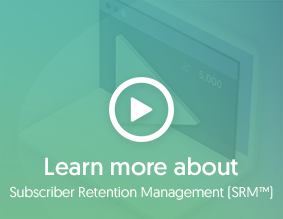
SVOD services often face the tricky challenge to safely migrate their current subscribers to the new environment. We'll explain the process in details in this blog post.
The demand for subscription video-on-demand services continues to grow worldwide. The ongoing rise in SVOD consumption is due to a combination of advertising fatigue and an ever-growing palette of quality content, spread across many SVOD services.
The fears of SVOD saturation are still difficult to justify. The current demand is mainly fed with a couple of giant players (Netflix, Hulu) and many niche or local players (like Walter Presents, Nickelodeon) that fill the void for viewers with specific needs. All those brands are fighting for their "piece of the cake" and are betting on their agility and flexibility to meet market demand. Technology providers like Cleeng aim to enable that agility with their turnkey platforms.
When SVOD services change vendors and platforms, they face a tricky challenge to safely and swiftly migrate subscribers to the new environment.
Complexity of the migration process
For the SVOD provider, it is extremely important to smoothly transfer the subscriber and payment data while keeping the process easy and efficient. Also, maintaining high conversion and low possible support queries from end-users is a key requirement.
The whole migration process is:
- Time-sensitive: meaning that the status of subscribers may already have changed (e.g. payment stopped, subscription renews, subscription type changes, etc.) from the moment the migration starts through to the end.
- Time-consuming: meaning that many parties are involved like the broadcaster, payment service providers, OVPs, etc.
The process has several dimensions that add more complexity. We have picked out the following:
- Determine Payment Methods: decide on current payment methods and which party receives and stores that payment information.
- Create Subscription Offers: verify subscribers prices, currencies, discounts and create subscription plans matching the current ones.
- Prepare Migration Scripts: set up a migration environment and create scripts to ensure payment renewals.
- Establish Key Contacts: define roles within each party on who will be responsible for handling their side of the migration.
End-user migration flow
The paying customer and his/her experience should be the main focus for all the parties in the supply chain. From an end-user point of view, a seamless user experience through the whole migration process is a must.
We always advise our client providers to communicate well the improvements to their subscribers and the actions needed to ensure great viewing experience without troubling their active subscriptions.

Payment migration
The migration of the payment information (methods, currencies etc) can be the most sensitive part of the process for obvious reasons. Here at Cleeng, we have established the following sequence of steps that ensure a smooth transition.
- Prepare the migration scripts
- Obtain the subscriber details
- Generate customer accounts on the Cleeng’s platform
- Finalize the migration.
On the journey towards helping the biggest SVOD services, technology providers face a lot of obstacles and unpredicted challenges. For us, user migration was one of them, but we managed to iron this challenging task out and raise it as our core strength.



